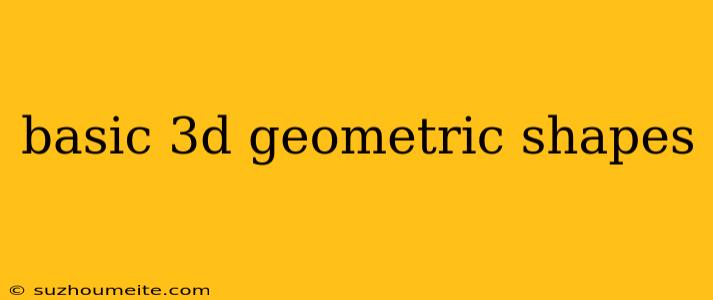Basic 3D Geometric Shapes
In geometry, three-dimensional shapes, also known as solids, are figures that have three dimensions: length, width, and height. These shapes exist in the real world and are fundamental to our understanding of space and form. Here are some of the most basic 3D geometric shapes:
1. Cube
A cube is a three-dimensional shape with six square faces, twelve edges, and eight vertices. All its sides are equal in length, and all its angles are right angles. Think of a dice or a sugar cube as examples of a cube.
2. Cuboid
A cuboid is similar to a cube, but its faces are rectangular, not square. It also has six faces, twelve edges, and eight vertices. A brick or a shoebox are examples of a cuboid.
3. Sphere
A sphere is a three-dimensional shape that is perfectly round, like a ball. It is formed by all points that are equidistant from a central point. Think of a basketball or a globe as examples of a sphere.
4. Cylinder
A cylinder is a three-dimensional shape with two circular bases that are parallel and congruent, and a curved surface that connects the bases. Think of a can of soup or a toilet paper roll as examples of a cylinder.
5. Cone
A cone is a three-dimensional shape with a circular base and a curved surface that tapers to a point called the apex. Think of an ice cream cone or a party hat as examples of a cone.
6. Pyramid
A pyramid is a three-dimensional shape with a polygonal base and triangular faces that meet at a point called the apex. The base can be any polygon, but the most common are square pyramids and triangular pyramids. Think of the Egyptian pyramids as examples of pyramids.
7. Prism
A prism is a three-dimensional shape with two identical and parallel bases and rectangular faces that connect the bases. The bases can be any polygon. Think of a triangular prism or a rectangular prism (cuboid) as examples of prisms.
These basic shapes are often combined to form more complex three-dimensional objects. Understanding these shapes is essential for various fields, including architecture, engineering, and design.
